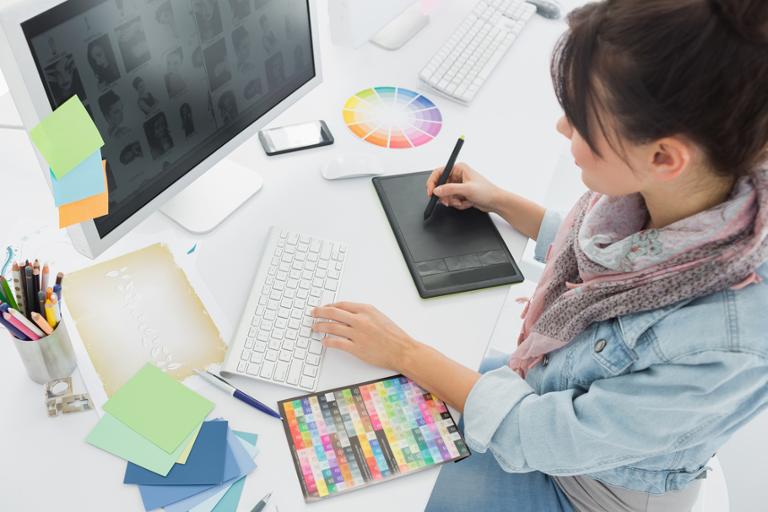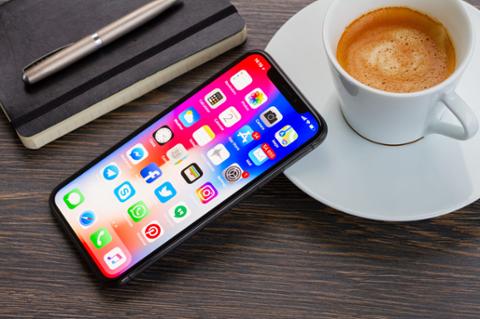Breaking into the world of graphic design requires a breadth of knowledge ranging from programming skills to an understanding of the history—and future—of visual communications. Independent projects help show off a beginner graphic designer’s skill sets by helping fill in the gaps where a design graduate’s school syllabus is lacking or uninspired.
A portfolio of independent projects can also help give you a voice and point of view as an artist, especially as you're researching, applying, and interviewing for new jobs. “For me, the whole point of independent projects is to explore things that you're interested in but haven't been able to gain experience with professionally,” Terra Henderson, an Austin, Texas-based motion designer, told Dice Insights. “Whether that's pursuing your illustrative style, learning 3D software, or building coding knowledge, it should all be focused on your passions.”
In Henderson’s case, her school gave students a broad overview of design and animation, but that didn't allow them to specialize much within their chosen field. “Their goal was to create generalists, which is great for securing entry-level jobs but not ideal for developing into a specialist within your field,” she said.
Consider Focusing on Mobile Independent Projects
Mobile-based projects such as app design, mobile webpages, mobile games, and the like can prove worthwhile independent projects because they help to showcase a variety of skill sets.
“The more applications your design skills can cover, the more jobs people will be willing to hire you for,” Henderson explained. “It also gives clients the confidence that you'll be able to handle anything that they throw at you.”
Henderson looks at independent projects as investment in personal growth and a way to seek out new opportunities. However, if creating those projects begins to feel like a chore, you probably won't invest the time you need into that skill for it to shine in your portfolio.
“[Independent projects] help re-energize and focus you on why you got into design in the first place,” she said. “No matter how creative the job, paid work will never give you the absolute freedom that personal work allows. You should always be investing in yourself.”
When it comes to connecting the dots between an impressive independent project and landing gigs, sharing work with brands, studios, and fellow artists is essential. “So many designers create in a vacuum, and don't pursue companies that they think they'd be a good fit for,” she said. “It's not enough to post personal work on your website without ever posting that on social or emailing it directly to clients.”
Show and Tell
Gabriela Della Corna, art director at New York-based firm Kwork, said independent projects are pure “Show and Tell,” giving young designers a chance to show off their unbounded skill set, since there’s usually no client (and therefore no client interference).
“These types of independent projects tell observers what subjects that designer is passionate about,” she said. “Since beginner designers often haven’t had the opportunity to work with a large range of clients, these projects are the perfect way to ‘work for anyone.’”
Della Corna said that, although it may seem obvious, these projects should showcase the skills pertinent to the industry that designer wants to work in. With that said, all designers should be strong in the basics: layout, typography and color theory, for starters.
She said independent projects should showcase those skills in addition to the ones necessary for the field they are interested in. “Want to work in app development? Showcase a deep understanding of UI/UX… Want to design packaging? Show off that love for print with fantastic physical pieces.”
Della Corna also recognizes that mobile development skills are going to be essential for any budding graphic designer—something to keep in mind when considering what type of independent projects to focus on. “At least half of the people on the train will not look up even once to watch the Manhattan skyline fly by, or see the new ads plastered around the car, because their heads are buried in their mobile device the entire time,” she said. “Phones may change shape, size, design or brand popularity, but as a whole, I don’t see them going anywhere anytime soon.”
That means it’s also important for designers to stay on top of consumer trends. Being able to design for mobile is important now and will be important 10 years from now, whatever that phone may look like.
“We always make sure to note when hiring that we value personal projects just as much as paid ones,” she said. “Even the act of doing an independent project shows us that the designer has passion, drive, and commitment to what they do. Those are valued qualities by employers and clients alike.”
In terms of turning projects into paid work, Della Corna said it’s all about the follow-through: If you’ve made an edgy website for that local restaurant just for fun, you also have to show other restaurants that may be in need of design work. “Share it on social media, tag the restaurant, tell all your designer friends and acquaintances. Get noticed… Then don’t be afraid to ask for paid work because of it.”
Most important: Craft personal projects with the same level of integrity as any professional project. “Pursue things that excite. Try new things. Don’t stop exploring.”


